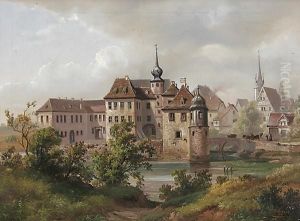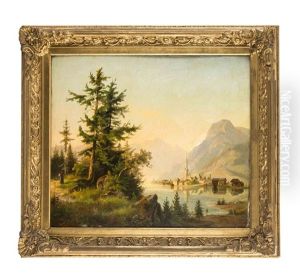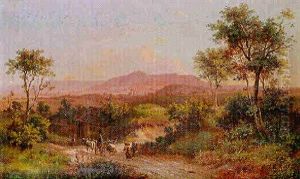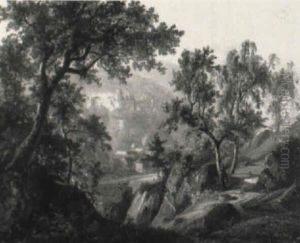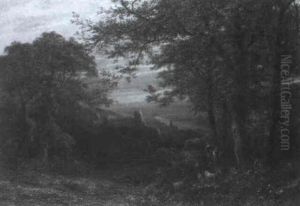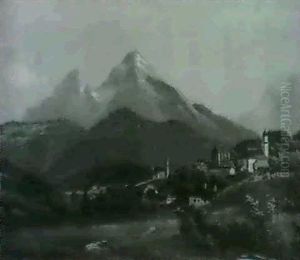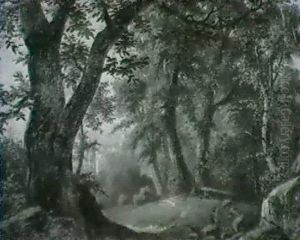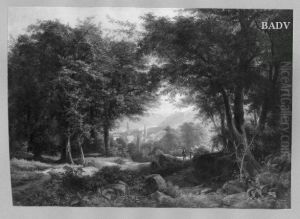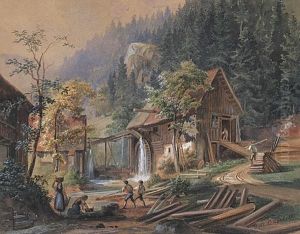Georg Maria Eckert Paintings
Georg Maria Eckert was a German artist primarily known for his work as a painter and illustrator. Born on February 14, 1864, in the city of Würzburg, Bavaria, he grew up during a period of significant transformation in Germany, which was marked by the unification of various states into the German Empire in 1871. Eckert's artistic talents emerged early, and he pursued his passion for art through formal education.
Eckert studied at the Academy of Fine Arts Munich, which was one of the most prestigious art schools in Germany at the time. The Munich Academy was renowned for its focus on traditional artistic techniques and was a hub for artists who later became influential in various artistic movements. Eckert's training there would have included a rigorous study of drawing, painting, and possibly other media such as printmaking.
After completing his education, Eckert began his career as an artist, creating works that often captured the landscapes, people, and mood of Bavaria and other regions. He was part of the Munich Secession, a group of artists who broke away from the more conservative Munich Artists' Association in pursuit of greater artistic freedom and innovation. This affiliation with the Secession movement suggests that Eckert was interested in exploring new artistic ideas and styles, although not much is widely known about his specific contributions to the movement.
Eckert also worked as an illustrator, a profession that gained considerable importance in the late 19th and early 20th centuries due to the proliferation of printed media. The illustrations he produced would have accompanied texts in books, magazines, and other publications, providing a visual complement to the written word.
Despite his involvement in significant artistic circles, Georg Maria Eckert remains a relatively obscure figure in art history, and his works are not as well-documented as those of some of his contemporaries. However, he is still recognized within the context of German art from that era, particularly for his contributions to painting and illustration.
Georg Maria Eckert's life was a testament to the ever-evolving art world of his time, as he navigated between traditional academic training and the burgeoning movements that challenged the status quo. He passed away on September 16, 1931, in Munich, leaving behind a body of work that offers a glimpse into his artistic journey during a dynamic period in German art history.
